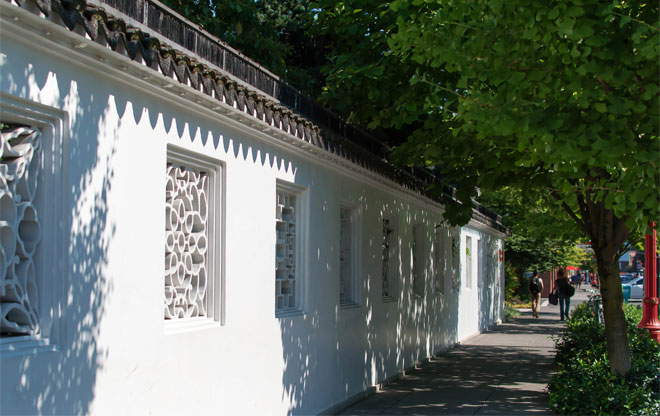
Utopia Beyond These Garden Walls
Just beyond these walls, Lan Su is a "spiritual utopia" in the midst of Portland's Old Town/Chinatown neighborhood. In the heart of bustling downtown, the surrounding Chinatown features red and yellow highlights in festive banners, lights, and street signs.
Image: Robin Wilcox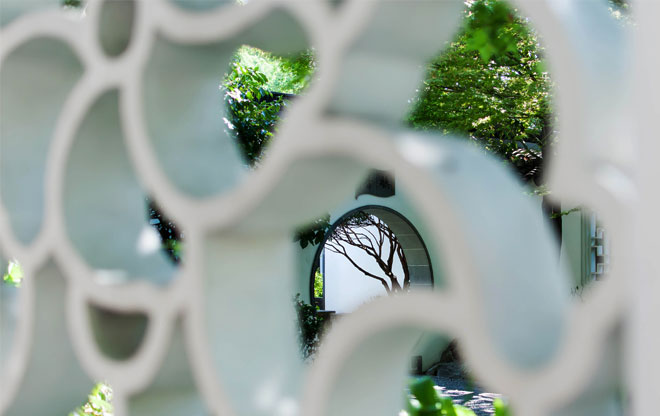
Glimpses Through Lattice Windows
Each lattice pattern in the windows of the garden wall is unique. The fleeting views into the garden were designed to tempt passersby to step inside and forge their own path of discovery. Wall windows provide a glimpse of the "complexity and robust health" in the garden.
Image: Robin Wilcox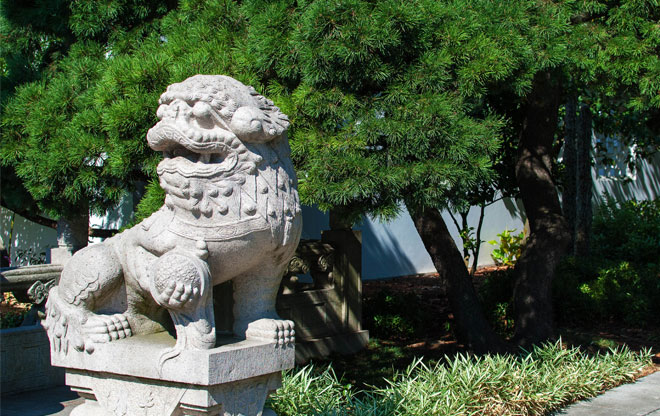
Imperial Welcome
A pair of Chinese Imperial guardian lions, traditionally known as Shi, greet visitors along Everett Street. Observant visitors will notice a third baby Shi at the feet of one of the lions. The lions are typically depicted as a pair: a male resting his paw on a ball and a female with her lion cub.
Image: Robin Wilcox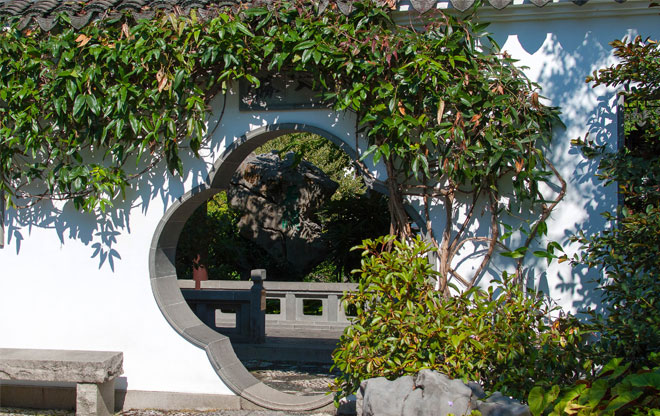
Infinite Space
Windows in the Chinese gardens are designed to draw your focus toward something special. In this case, visitors must decide whether to walk through the window directly to the Knowing Fish Pavilion, or enter the Hall of Brocade Clouds. If you’re a person who likes to follow your initial instinct, head straight through the window toward the Knowing Fish Pavilion. If you like to read the last page of a good book first, take a left and use the window as your exit route. If you’re like me, you’ll try both.
Image: Robin Wilcox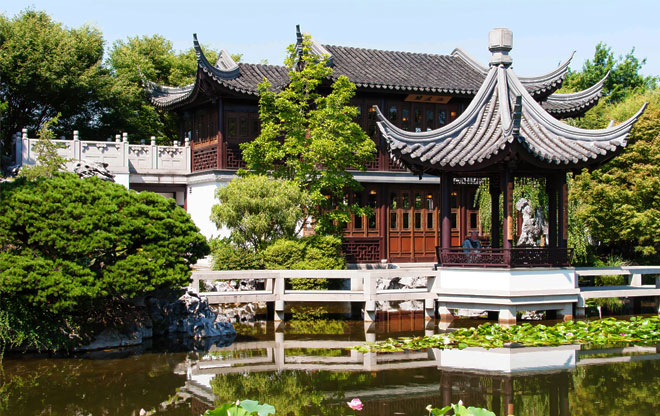
Lake Zither
One-third of Lan Su is water, with Lake Zither at the garden's core. At the perimeter of the water, hand-formed, chiseled granite was placed by hand with the aid of thick hemp ropes. These large rectangles of granite were used for walkway borders, building foundations, and bridge spans. Each piece was carefully placed to form a perfect fit. Not so perfect was Lake Zither -- the pond began leaking just a few years after the garden opened. Following a lawsuit, the contractor repaired the problems at no cost to the city.
Image: Robin Wilcox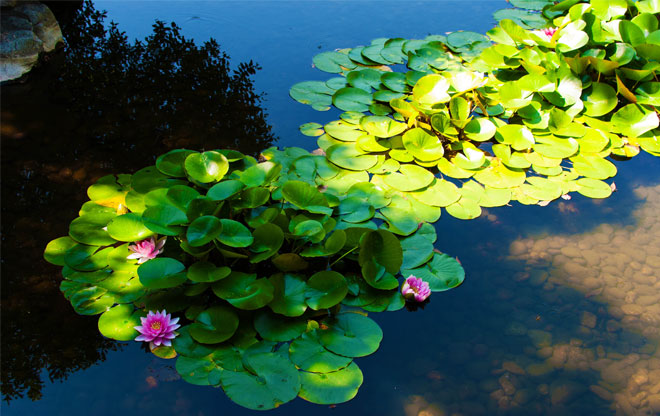
Symbols of Purity
More than 400 plant species packed into the garden represent a cross section of native and cultivated Chinese plants. Due to import bans, none of the garden’s plants came directly from China. In particular, Lotus flowers (pictured here) have long been a symbol of purity in China and are said to "reach out of the water to flower in the air in a symbol of the search for knowledge."
Image: Robin Wilcox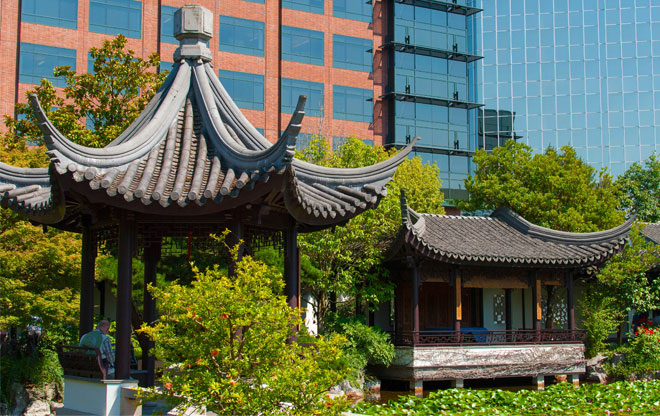
Moon-locking Pavilion
On clear nights, visitors see the moon's reflection as a shimmering spotlight in the center of the lake, locked in by the pavilion's shadow. From the north side of the lake, Portland’s skyline looms above Lan Su’s buildings, seemingly dwarfing the one-block urban retreat. From within the garden, though, the skyline recedes as visitors take in the detailed architecture and weave their way through the garden.
Image: Robin Wilcox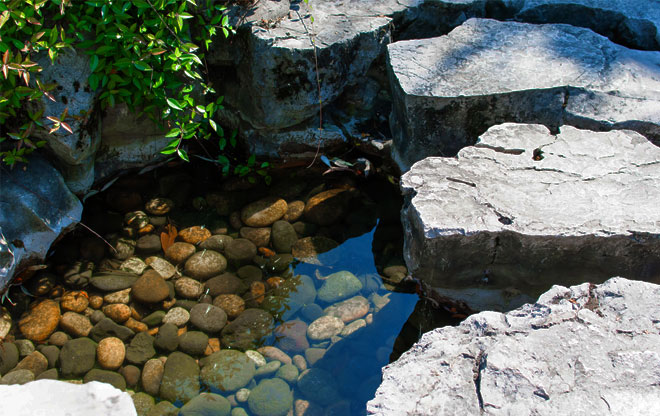
Yin and Yang
This juxtaposition in textures creates additional interest and helps focus the attention of visitors toward specific elements. Against the backdrop of a still pond lined with smooth river rock, these stepping stones feel particularly precarious and rough as you try to cross without taking an unplanned swim. In other areas, a smooth white wall offsets the deep-color, intricate craftsmanship of a window frame. Materials complement and complete one another throughout the garden.
Image: Robin Wilcox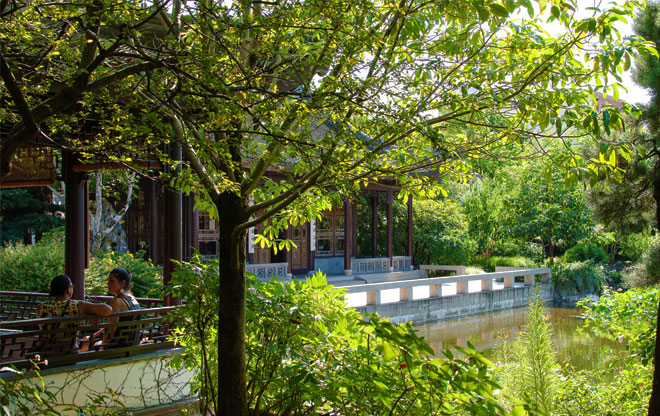
Surrounded by Nature
At times, the garden will help you forget you are surrounded by a busy city. During the Ming Dynasty, when scholar gardens were at their peak in China, it was said the ideal life was to be a hermit in the mountains. Lan Su brings the tranquility of nature to city-dwellers. Whether you spend half a day exploring the garden and sipping tea in the teahouse, or stop in for an hour during your lunch break, you will leave feeling rejuvenated.
Image: Robin Wilcox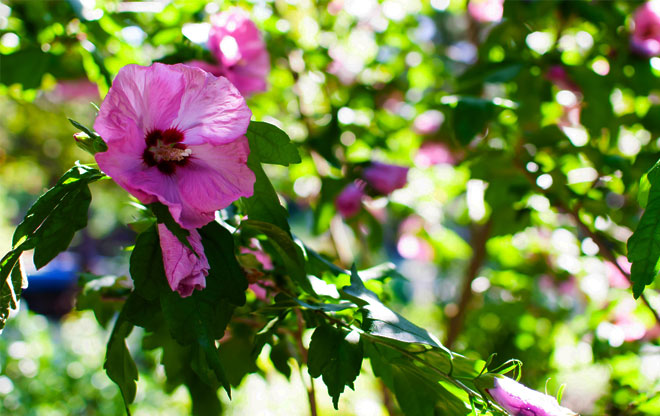
Plant Nerds Rejoice!
Lan Su showcases collections of magnolia, peony, camellia, rhododendron, osmanthus, and bamboo. Different plants are naturally highlighted each season as their flowers bloom, new growth emerges, or leaves change colors and drop. The collection is a mixture of traditional Chinese plantings, recent discoveries from remote Chinese landscapes, and modern hybrids developed by careful breeding.
Image: Robin Wilcox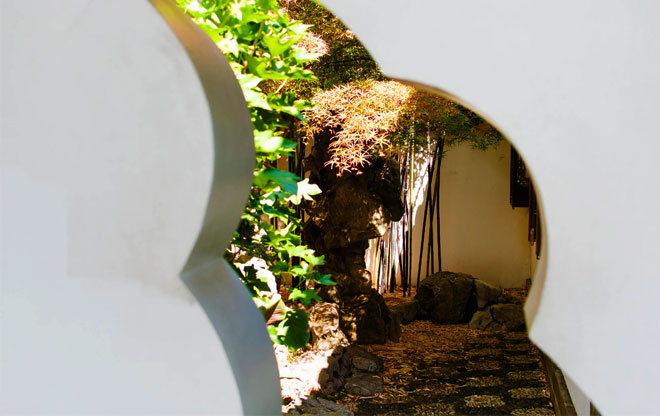
Through Detours, Access to Secrets
Chinese gardens are not meant to be viewed all at once, but rather by framed views of specific elements that hide signs of anything "vulgar or common." The garden can feel a little maze-like at times; it is impossible to progress through the rooms in a linear fashion without skipping portions of the garden. Do not rush. Take in the garden bit by bit. Slow down. Breathe. No opportunity was missed to create a surprise view. Throughout the garden, doorways and windows create the illusion of infinite space by forming views within views.
Image: Robin Wilcox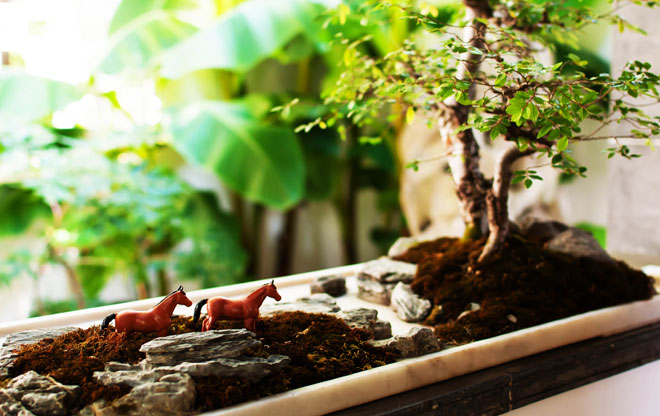
Harmony
Visitors should be sure to keep their eyes peeled for the miniature landscapes. In Chinese gardening, these idealized landscapes express the harmony that should exist between man and nature. I am not certain whether the plastic horses were part of the original installation or added by a visitor. As I walked through the garden, these silly plastic horses reminded to pay attention to the details. Regardless, I did not spot any other plastic animals.
Image: Robin Wilcox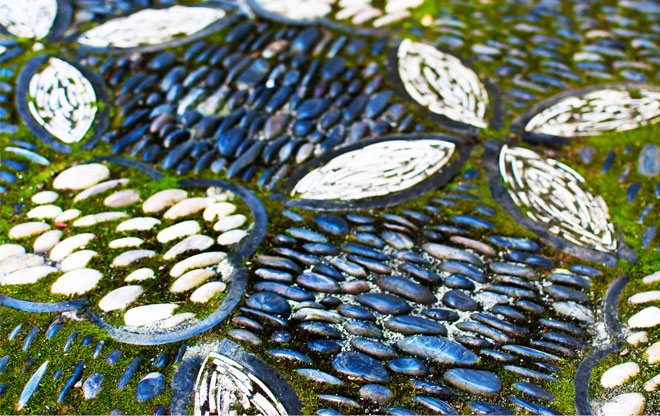
Beyond Visual Beauty
Stone pathways were painstakingly laid by hand ... twice. During construction, contractors had to re-install a substantial portion of the pathway system to meet accessibility requirements, which specify that the space between pebbles cannot create more than a 1/8 inch depression. Ancient Chinese custom suggests depths of 1/4 inch to massage the feet of those who walk the path. These patterns appeal to visitors’ tactile senses in addition to providing visual beauty for the eyes. At least, they would if the space between the pebbles were wider ...
Image: Robin Wilcox